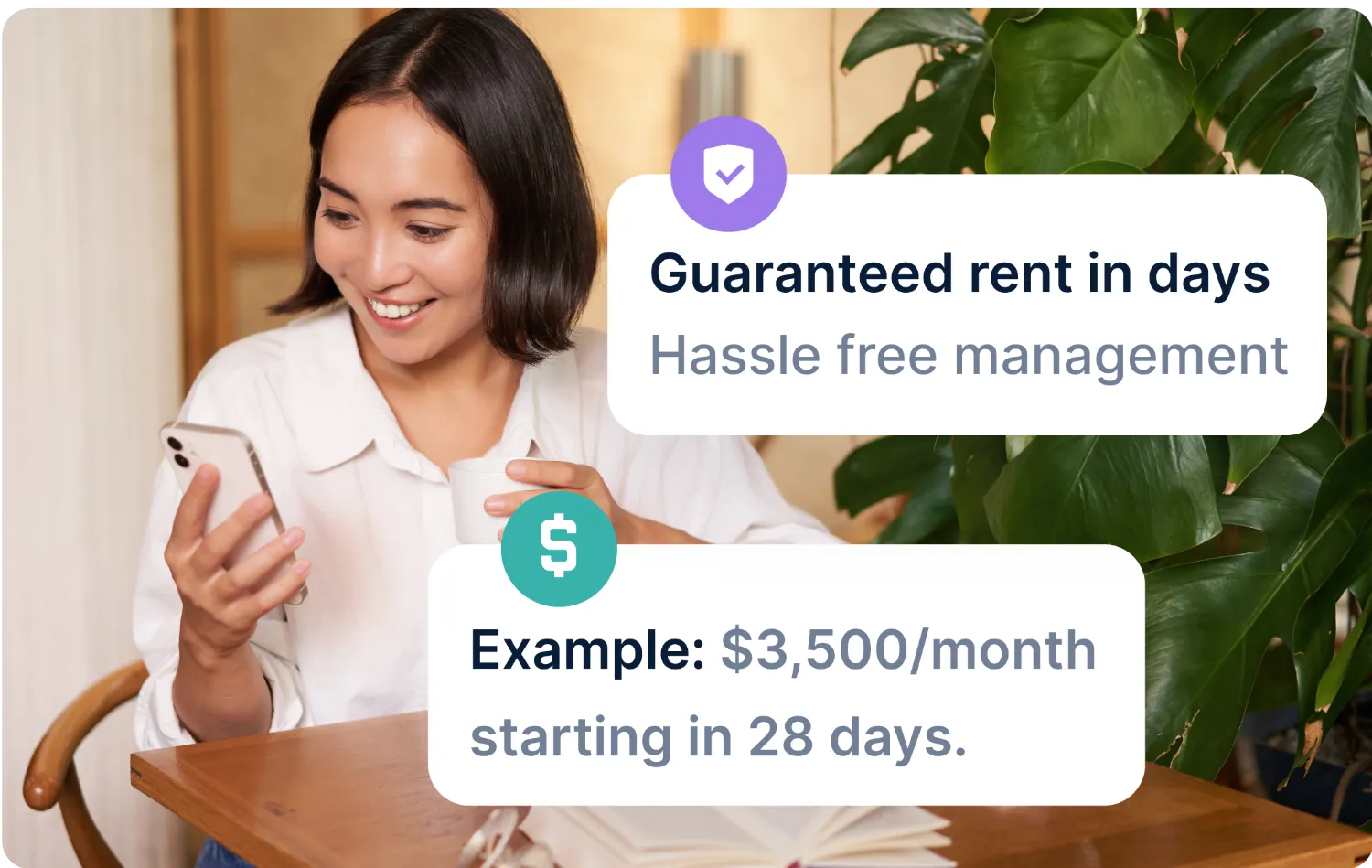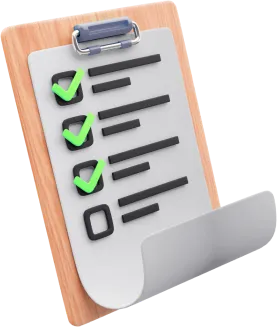Doorstead Guarantee explained: what is guaranteed rent?

If you're a homeowner, you might have heard of the term "rent guarantee" and might be curious about what it means. In this article, we'll explain rent guarantees, Doorstead's guaranteed rent model, and the benefits of guaranteed rent for homeowners. If you're looking for extra peace of mind, this lower-risk property management model may be what you need.

What is guaranteed rent?
Guaranteed rent means that a homeowner will always receive the rent owed to them. Homeowners use a guaranteed rent scheme to have someone else manage their property in exchange for a predetermined payment. The homeowner will still get paid, even if the property is empty or the tenant does not pay rent.
The Doorstead Guarantee means that if a tenant does not pay their rent or the property stays vacant, Doorstead will pay the rent for a set period as a service guarantee to the owner.
With Doorstead's Guarantee, homeowners get paid on time every month. Get started today: www.doorstead.com
Please note that the guaranteed rent offered by Doorstead differs slightly from rent guarantee insurance, which you can read more about here.
Why our rent guarantee is one-of-a-kind
Doorstead brings you the best of full-service property management. We believe a guarantee is better than a promise, and we use data and lean operations to guarantee your property's monthly rent and start date upfront. The Doorstead Guarantee is a property management contract that ensures your property's monthly rent and start date upfront. Doorstead has the best data and leasing practices because we're on the hook to deliver 100% of guaranteed rental income to you every month. We align our incentives and maximize customer results while simultaneously decreasing risk.
"I can't believe this was this easy - you essentially have to put in your bank account, and they send you emails when your rent deposits are coming. Everything that was stated in the emails happened accordingly. The whole process has been clear and coherent, overall just super great property management." Read more about this customer testimonial from our homeowner Summer in Southern California.
The Doorstead Guarantee that ensures homeowners and tenants using the platform have an excellent experience.

How does the Doorstead Guarantee work?
Doorstead provides a guaranteed rent and start date for your property once you request an estimate on our website. After discussing your estimate with a rental advisor and signing our agreement, we inspect the property and take care of any repairs to get it rent ready. When your property becomes rent ready, we begin finding and placing the best tenant for your home and manage everything from start to finish so that you don't have to lift a finger.
The next steps to getting started are simple and as follows!

What properties are eligible for a rent guarantee?
Doorstead takes on the risk with a guarantee, so we maintain stricter requirements around initial property repairs to get your property to our Rent-Ready standards. Under a Doorstead Guarantee, Doorstead also has complete control over tenant selection. Please enter your address and answer some simple questions to see if your property type is eligible to be managed under the Doorstead Guarantee. You will receive an email with the recommended service.

Guaranteed Payments
Doorstead charges a Management Fee of 8% of Guaranteed Rent or the actual rent, with a minimum of $150 per month. Additionally, there is a Tenant Placement Fee equal to 50% of one month's rent if we need to place a new tenant.
After that, Doorstead negotiates your rental price for you.
- If we beat our guarantee, you get more income. If your property rents out above the guaranteed price, you get to pocket the extra income. And if it falls short of the guaranteed rent, we cover the difference.
- Your rental payments will start on the Guaranteed Start Date.
- You will receive rent on the 8th of every month, 2-3 business days later, depending on your bank transfer time.
Doorstead spends more than $1 million annually in covering owners' vacancy costs and honoring our Guarantee.
What are the benefits of the Doorstead Guarantee?
Doorstead firmly believes that a guarantee is more substantial than just a promise. Therefore, before any work begins, we guarantee your property's monthly rent and start date upfront. In addition, we align our interests and incentives to yours, ensuring we fill your unit quickly with only qualified tenants.
The Doorstead Guarantee minimizes the personal stress of dealing with vacancies, shortfalls in income, and constantly working to manage your property.
This process maximizes your rental income while simultaneously risks on your part. Doorstead offers a traditional contract for properties not eligible for the Doorstead Guarantee or for homeowners who prefer a traditional full-service property management approach. Begin by entering your property address, and our team will guide you to the right partnership option for your property.
What does the Doorstead Guarantee include?
Doorstead covers full-service property management. On top of the rent guarantee service agreement, this also includes:
- Getting your property rent-ready by conducting necessary repairs
- Taking high-quality photos and creating a 3-D walkthrough video of your property for listing
- Listing and marketing your property on top rental sites
- Conducting showings with our field agents
- Screening applications and selecting qualified tenants
- Moving your tenant in
- Performing regular property inspections
- Handling maintenance requests
- Renewing Leases
- $10,000 of damage and eviction protections.
Our guarantee covers the full suite of tasks included in property management, like tenant placement, rent collection, maintenance coordination, and more. Learn how we make this possible through thoughtfully designed operations and machine learning.
By using the Doorstead Guarantee, homeowners can relax knowing that their rental is in good hands.
The takeaway on rent guarantees
Doorstead is a full-service property management company providing peace of mind to those renting. With guaranteed rent, homeowners no longer need to worry about vacancy periods or finding suitable tenants.
If you want to rent out your property passively while eliminating any risk, our Doorstead Guarantee might be just right for you. So sign up today and get started on your guaranteed monthly rent contract.












.jpg)





















































































.avif)
